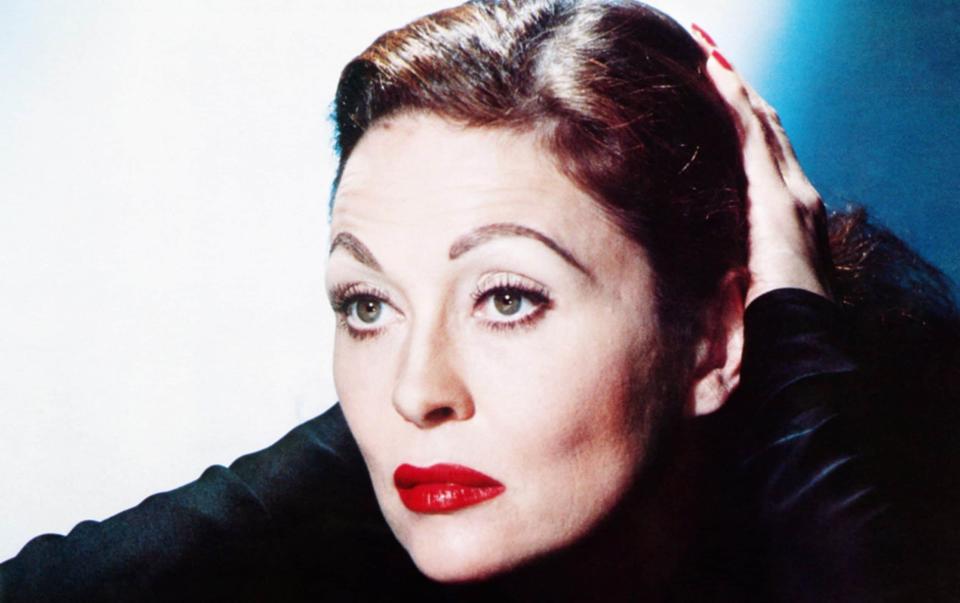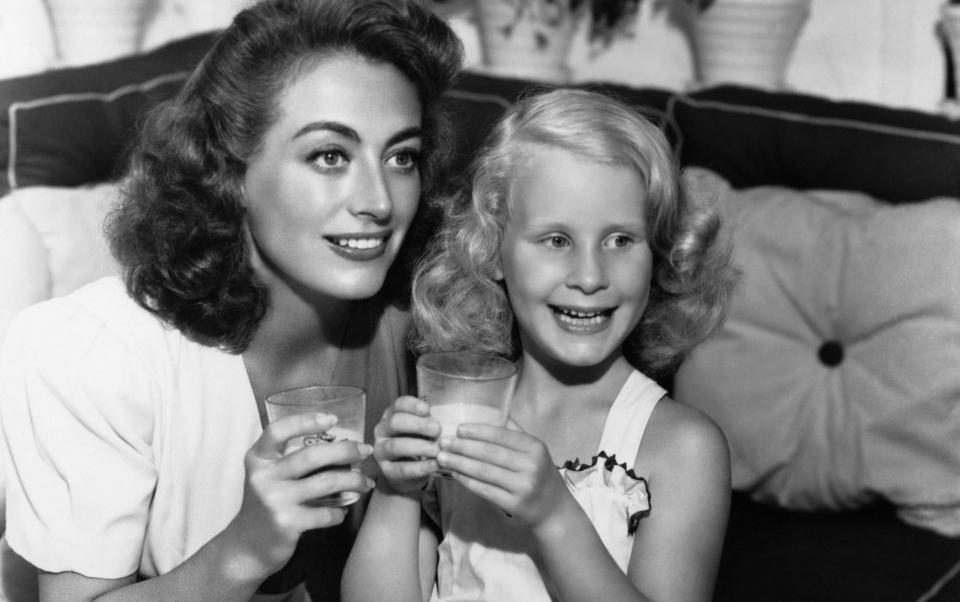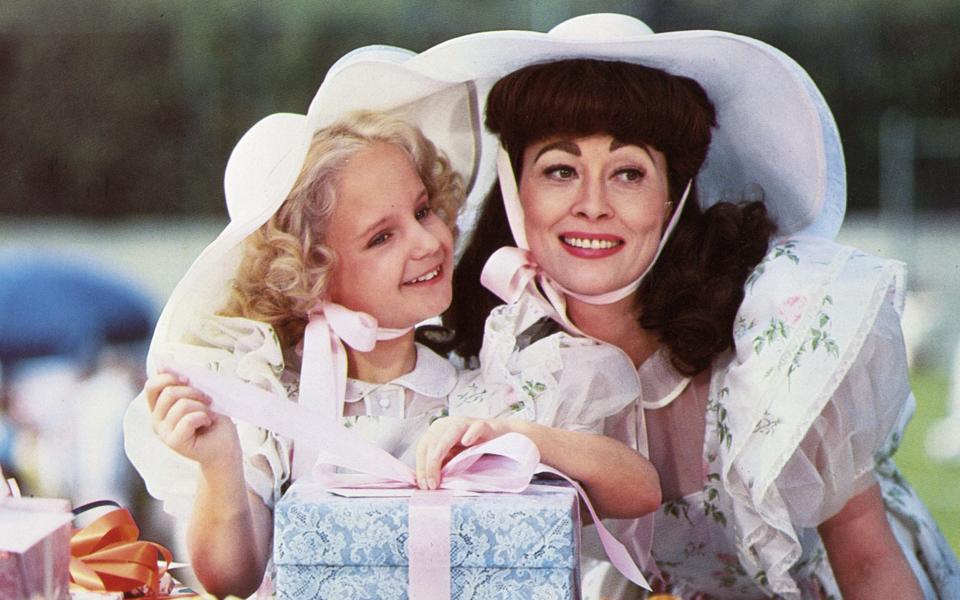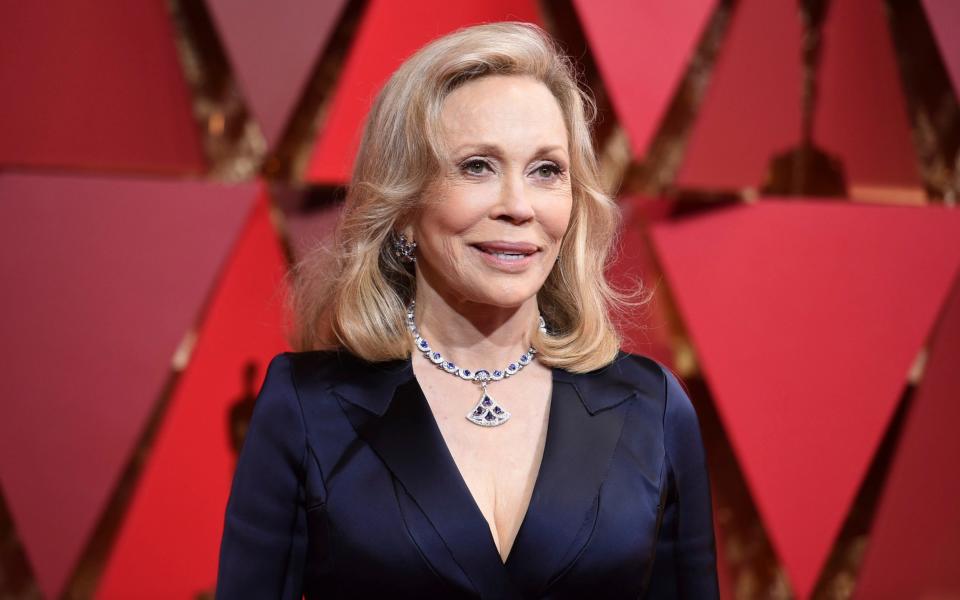How Mommie Dearest trashed the reputations of two Hollywood greats

On the morning of September 16 1981, Faye Dunaway was one of the biggest stars of her era. She had won an Oscar for Best Actress four years previously for her portrayal of a venal television executive in Network. She had attracted praise for juggling commercial films such as The Towering Inferno and The Three Musketeers with more artistically satisfying roles in Network or Chinatown. Since her emergence in 1967 as the outlaw Bonnie Parker in Bonnie and Clyde, she had established herself as one of the leading figures of this new period.
The role that she had now taken on – that of the legendary film star Joan Crawford – should have cemented this reputation. It did not seem impossible that, in a matter of a few months, she could be collecting a second Academy Award. Yet Dunaway awaited the premiere of Mommie Dearest, in which she played Crawford, with justifiable anticipation. The production had been a troubled one, but, perhaps, something excellent had emerged from it.
“Dunaway does not chew scenery. Dunaway starts neatly at each corner of the set in every scene and swallows it whole, co-stars and all,” wrote Variety, the major trade magazine for the film industry, as it lamented her performance. It quickly became obvious that Frank Perry’s biopic about Crawford’s abusive relationship with her adoptive daughter Christina was not the prestigious and respectable picture that had been intended.
Instead, it became a byword for unintentional hilarity and camp excess, with Dunaway’s full-throttle performance as Crawford soon becoming a notorious target for mockery. It also signalled the end of her career as a major film star, and saw her relegated to supporting roles and B-pictures, just as Crawford herself had been. So, how did it all go so wrong for both women?

Joan Crawford had a career that could be likened to a rollercoaster. She began acting in films in the Twenties, and, after successfully transitioning from silent pictures to the “talkies”, enjoyed enormous success in the “women’s pictures” of the Thirties, such as The Gorgeous Hussy and Love On The Run.
Life imitated art, however, and a chaotic off-screen romantic life did not help her reputation. By 1939, she was one of a group of actresses labelled “Box Office Poison” by the Independent Theatre Owners Association of America. Smarting at the criticism, she switched to richer dramatic roles, and won an Oscar in 1946 for her performance as the titular character in the psychological thriller Mildred Pierce.
Yet this proved to be the highlight of her career. Beset by continued rumours that she was impossible to work with, she appeared in pictures that gradually turned into self-parodies, with titles such as Berserk! and Trog. A rare late success came in 1962’s What Ever Happened To Baby Jane?, a Grand Guignol horror in which Crawford appeared opposite her long-time rival Bette Davis. Davis was nominated for an Oscar, and Crawford was not, possibly because her reputation in Hollywood had been so debased.
She gradually became a heavy-drinking recluse after her appearance in Trog in 1970, eventually dying in a New York apartment in 1977. She left $2 million in her will, but the vast majority of the money went to her favourite charities. Her eldest children Christina and Christopher were disinherited, and Crawford’s will stated: “It is my intention to make no provision herein for my son, Christopher, or my daughter, Christina, for reasons which are well known to them.”
The following year Christina got her revenge with the publication of her damning memoir, Mommie Dearest. It presented Crawford as an abusive alcoholic who had adopted her children for little more than publicity, and spent her time on a succession of self-destructive affairs with both men and women.
Christina wrote of how her mother relished inflicting sadistic corporal punishment upon her children: “Mommie was always in a terrible mood if anyone accidentally woke her up, and the spankings for this infringement of the rules conveyed the full force of her anger. She spanked so hard she broke hairbrushes, wooden hangers and yardsticks across my bottom. The spankings left large painful blisters and the long red welts would be visible for days.”
Many of Crawford’s former co-stars defended her against her daughter’s allegations. Even Davis said: “I was not Miss Crawford’s biggest fan, but, wisecracks to the contrary, I did and still do respect her talent. What she did not deserve was that detestable book written by her daughter.” The combination of prurient detail and Hollywood scandal, though, made Mommie Dearest a bestseller.

The film rights were swiftly acquired by Frank Yablans, the producer and former head of Paramount Pictures. The first choice for the role of Crawford was Anne Bancroft, but she turned it down because, as Dunaway later ruefully said, there were “rumours on the street that she had decided against the role because the general sentiment in the industry was that anyone who played Christina’s version of Crawford would pay a price for taking on one of Hollywood’s great legends.”
By the time that Dunaway was offered the part, the script had been co-authored by four people, including Yablans himself. Christina, who had written an early draft, was no longer credited on the screenplay, but remained closely involved with the production. It was clear that whatever the veracity of Mommie Dearest was, it would remain Christina Crawford’s account of her mother.
Yet Dunaway was intrigued. She was married to the photographer Terry O’Neill – responsible for the iconic “Morning After” shot of her with her Oscar the day after winning it – and he now acted as her manager. They discussed the role, which Yablans and Perry suggested would be more balanced than the book had been, and that the film would be a panoramic account of what it was like to be a star in Hollywood, and to have been someone like Joan Crawford.
Dunaway accepted the part. She knew that she would be the dominant role, with the script being structured in such a way that she would be in virtually every scene. As she wrote in her autobiography: “The acting demands were extraordinary, and it was clearly a role that would force me to test and stretch my talent once again.”
She had grown bored of taking on well-paid supporting roles and wanted a different opportunity. Besides, Crawford had been kind about her previously. She had written in her memoir, My Way of Life, that “of all the actresses [today], to me, only Faye Dunaway has the talent and class and the courage it takes to make a real star.” Or, perhaps, to play her.

The film’s production proved to be more than simply an artistic challenge. It swiftly turned into a battle of wills between Dunaway, Christina Crawford and their husbands, both of whom received executive producer credits. Dunaway felt a responsibility to play Crawford as a more nuanced figure than she had appeared in the book, and wanted to convey something of her essential loneliness and insecurity, as well as the brutality of how women were treated in the era of big studios.
Her insight into her relationship with her daughter was that “Christina was this cool little girl who didn’t love her in the way she thought a child would love her, and she couldn’t handle it.” Dunaway worked with the writer Bill Alfred to create scenes showing Joan’s more charming and likeable side, but it was no good. She reflected: “It was a war from the beginning… Christina’s husband was there pushing her point of view, and Terry was there trying to protect mine. And Joan’s.”
From the outset, the relationship between the cast, creative team and producers was troubled. O’Neill attempted to discuss what he and Dunaway believed was the film’s inappropriate artistic direction with Yablans, only to be met by a torrent of abuse. O’Neill, no shrinking violet, responded robustly: “Let’s take this out to the gutter, because that’s where this conversation begins.” Yablans defended himself by saying: “I had two husbands to deal with. David driving me crazy that Faye was trying to sanitise Joan, and Terry worried we were pushing Faye too far and creating a monster.”
And as filming progressed, Dunaway began to empathise with the character she played in increasingly disturbing ways. “At night I would go home and feel Crawford in the room with me,” she later said, “this tragic, haunted soul just hanging around… I remember her being around, but in a very eerie sort of way. It was as if she couldn’t rest.”

Dunaway’s co-stars viewed her immersion in method acting less charitably. Rutanya Alda published her own memoir in 2015, The Mommie Dearest Diary, in which she suggested that the film’s insecure and anxious star treated her colleagues appallingly, asking that they turn their backs to her so that only she would be in shot, while constantly demanding hair and make-up changes.
Eventually, the film’s costume designer Irene Sharaff, who had worked with the far from laid-back likes of Elizabeth Taylor and Judy Garland, walked off the set, and informed Alda that she had never worked with anyone as erratic and selfish as Dunaway. Whether or not she was channelling Crawford, the working environment on set had become a punishing exercise in excess.
It reached its apotheosis in the notorious scene in which Crawford flies into a rage with Christina because she has used wire hangers for her expensive clothes, rather than the wooden ones she has been given. Dunaway, angry and frustrated by the production, went so far over the top that what should have been a chilling and frightening scene of child abuse instead turned into an unintentionally hilarious exercise in high camp.
When she had finished filming the scene, it was left to O’Neill to tell Perry “no more wire hangers”, something that Dunaway later wrote “remains, even now, an ugly wound on my psyche.” Even as her husband said “you can’t do it any more, you’re being pushed too far”, she was all too aware that “it was camp that had gone way over the edge, from the white face, to the screaming rage of Crawford, to the child that I must hit with wire hangers… everything about this production was out of kilter, off centre, and somehow I could never find my way back to some sort of middle ground.”
When the film was released, Dunaway’s fears were realised. Her full-throttle central performance attracted both criticism and praise. Roger Ebert, who despised the film, called it “stunningly suggestive and convincing”, and Vincent Canby wrote in the New York Times that “Mommie Dearest doesn’t work very well, but the ferocious intensity of Faye Dunaway’s impersonation does.” Yet even the positive notices seemed tempered with apprehension, as in Pauline Kael’s description of how Dunaway, in a “startling, ferocious performance”, spoke “with the beyond-the-crypt chest tones of a basso profundo.”

It soon became clear that audiences were not viewing the film as an intense psychological drama, but as an uproarious camp comedy. Paramount Studios pivoted their marketing to reflect this, much to Dunaway’s horror, with advertisements carrying the tagline “No wire hangers… ever!” and bearing the legend “Mommie Dearest – the biggest mother of them all.” Dunaway wrote angrily “that the movie could be reduced to that, stripped of any of the dignity I had tried to give it, was devastating.”
Yablans ensured that the tagline was pulled, calling it “obscene, vulgar, salacious [and] a racial slur of the poorest taste”, but the film’s status as a grotesque failure was assured. It came as little surprise that it dominated the Golden Raspberry Awards the following year, “winning” Worst Film, Worst Supporting Actor and, for Dunaway, Worst Actress. It was a lifetime away from her success with Network.
Even Christina Crawford was horrified by the film, which she all but disowned. Never one to pass up an opportunity for publicity, she would appear at screenings of it and offer readings from her memoir, and would subsequently be joined by the drag act Lypsinka, in character as her mother.
There has never been any serious attempt to rehabilitate Mommie Dearest, which now stands as a strange, disturbing mixture of camp comedy and child abuse horror, but the damage that it has done to the reputations of both Crawford and Dunaway is considerable. The former, at least, was beyond the reach of such criticism, but Dunaway’s career never really recovered afterwards.
“I know you live a life, and you act many roles,” she later wrote, “but after Mommie Dearest, my own personality and the memory of all my other roles got lost along the way in the mind of the public and in the mind of many in Hollywood.” She concluded, sadly, that “people thought of me as being like her, and that was the unfortunate reality for me about this project.”

